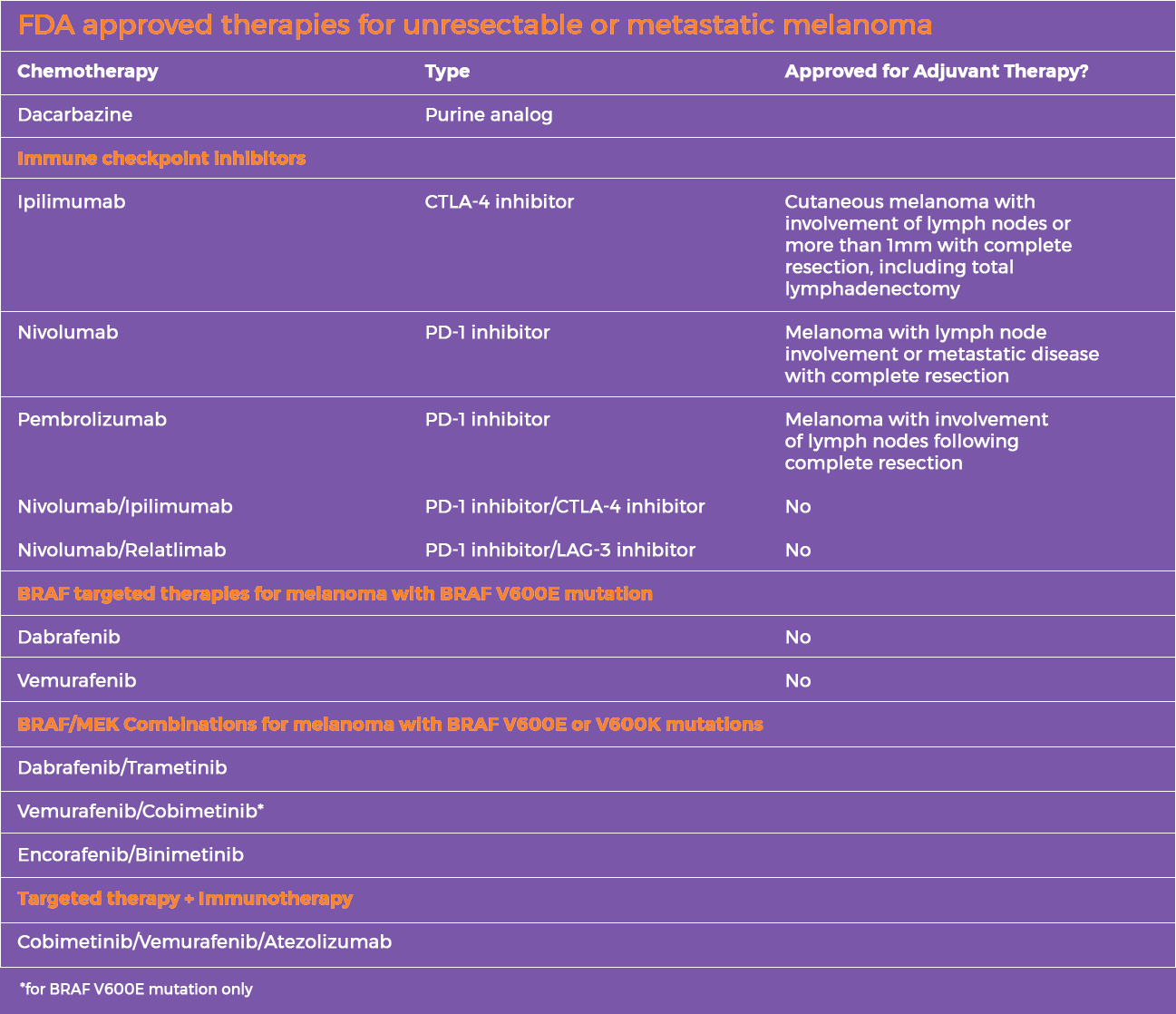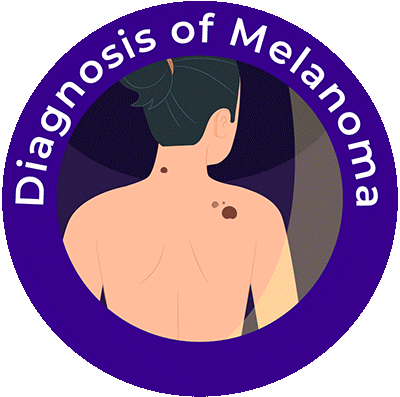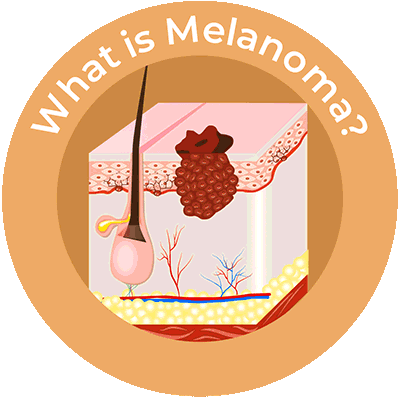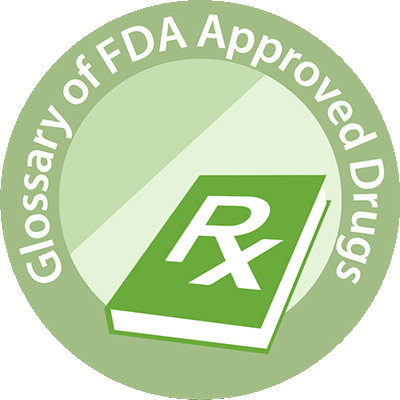This activity is provided by Med Learning Group.
This activity is supported by an independent medical education grant from Regeneron Pharmaceuticals, Inc.
Copyright © 2025 Med Learning Group. Built by Divigner. All Rights Reserved.
Current and Emerging Treatments in Melanoma
Surgery
Surgical removal with adequate margins is the first line of treatment for melanoma Stages I-III, and it is effective in most patients. In some cases, especially in case of Stage III melanoma (non-resectable melanoma), surgery may not be feasible. In other cases, patients relapse following surgery and may require other forms of treatment.1 In these cases, radiotherapy, chemotherapy, immunotherapy, or targeted therapy are used as adjuvant treatment.2
Radiotherapy
Radiotherapy is not typically used as first-line treatment as melanoma tends to be a radioresistant tumor with the ability to repair DNA damage caused by radiation. As such it is used as palliative treatment for metastatic melanoma. For the treatment of brain, lung or liver metastases, stereotactic radiosurgery and body radiotherapy are more commonly used.2
Chemotherapy
Chemotherapy is used in palliative situations and in relapsed melanoma, but other choices are preferred in case of metastatic melanoma. Dacarbazine (DTIC) is the only drug approved by both the FDA for the treatment of metastatic melanoma.3 Many other drugs including temozolomide, nitrosureas, paclitaxel, docetaxel, and cis/carboplatin are used off-label in the treatment of metastatic melanoma.2

Immunotherapy
Immunotherapy uses the patient’s own immune system to elicit responses against tumor cells. Currently, immune checkpoint inhibitors and oncolytic virotherapy are the two types of immunotherapies available for the treatment of advanced melanoma.1 Four classes of immune checkpoint inhibitors have been FDA approved including ipilimumab, a CTLA-4 inhibitor, nivolumab and pembrolizumab, PD-1 inhibitors, atezolizumab, a PD-L1 inhibitor, and relatlimab-rmbw, a LAG-3 inhibitor.2 Talimogene laherparepvec is the first oncolytic virus approved in the treatment of melanoma.2 Adverse events in this class include fatigue, chills, and fever, and the intensity reduces with consecutive treatments.
Targeted Therapy
The aim of targeted therapy is to stop the proliferation of malignant cells by inhibiting the mutated genes. Mutations in the BRAF, NRAS, and NF1 genes occur most often and are seen in 50%, 25% and 14% of cases, respectively. Targeted therapy includes BRAF inhibitors vemurafenib, dabrafenib, and encorafenib, and MEK inhibitors trametinib, cobimetinib, and binimetinib. Resistance to treatment is the main limitation in this treatment class, and side effects include fatigue, arthralgia, photosensitivity, skin, CV, and ocular toxicity.2
Combination Therapy
Combinations of immunotherapy and targeted therapy have been efficacious for the treatment of advanced melanoma, and several are FDA approved. The most recent combination to be approved for the treatment of unresectable or metastatic melanoma in patients 12 years or older was nivolumab with relatlimab-rmbw in March 2022.2
Palliative Local Therapy
Metastatic melanoma can be treated to regional lymphadenectomy, while isolated metastases to organs including the lung, GI tract, bone, and brain can sometimes be treated by resection, leading to occasional long-term survival.4
Emerging Therapies
Multiple trials are in progress evaluating novel therapeutic options in the management of melanoma, including in the adjuvant and neoadjuvant clinical settings, as well as in patients with resistance due to prior checkpoint inhibitor use. Evaluating the latest data with emerging therapeutic options and patterns informs clinicians of important ongoing trials in the context of the latest practice-changing clinical trial results. Key updates include data on the use of checkpoint inhibitors, viral vector therapies, and combinations in the neoadjuvant setting; updates with adjuvant checkpoint inhibition therapy in melanomas; and advances in treatment sequencing approaches. As part of treatment sequencing, combination checkpoint inhibition strategies and novel therapies, such as tumor-infiltrating lymphocyte (TIL) therapy are changing practice patterns.
Neoadjuvant therapy
Although not previously a standard of care, data supporting neoadjuvant checkpoint inhibition with pembrolizumab in advanced melanoma presented at the ESMO 2022 meeting include improvements in event-free survival among patients with stage IIIB-IV cutaneous, acral, and mucosal melanomas who do not have brain metastases. Patients were randomized to neoadjuvant therapy with pembrolizumab followed by adjuvant pembrolizumab therapy or adjuvant pembrolizumab therapy alone. On the primary endpoint of event-free survival, a significant 41% improvement was observed (one-sided log-rank P= .0015, Cox HR 0.59, 95% CI, 0.40-0.86), indicating a benefit in addition of neoadjuvant pembrolizumab.5
Further evidence of the value of neoadjuvant therapy was demonstrated in the NeoTrio study, which reported that an 80% pathologic response rate in patients with stage III melanoma receiving combination neoadjuvant therapy with BRAF/MEK-targeted therapy and PD-1/PD-L1 checkpoint inhibition versus 55% with either therapy alone and 50% with therapies used in sequence. However, fatigue, pyrexia, and rash were more common with combination therapy.6 Additionally, after 2 years of follow-up, neoadjuvant therapy with T-VEC in in stage IIIB or IVM1a melanoma has recently shown a 51% improvement in overall survival (HR: 0.49, 80% CI, 0.30-0.79), as well as a 25% improvement in recurrence-free survival (HR: 0.75, 80% CI, 0.58-0.96).7
Adjuvant therapy
Adjuvant checkpoint inhibition in melanoma with pembrolizumab in the KEYNOTE 716 study showed benefits in stage IIB or IIC melanoma, with a significant improvement in 24-month distant metastasis-free survival (88.1% vs 82.2%) and recurrence-free survival (81.2% vs 72.8%) compared with placebo, albeit with higher rates of grade 3 or higher drug-related adverse events (17.2% vs 4.9%).8 Similarly, in the CheckMate-76K trial, adjuvant therapy with nivolumab versus placebo in completely resected stage IIB and IIC melanoma identified improvements in relapse-free survival (HR: 0.42; 95% CI, 0.30-0.59; P< .0001), with higher rates of grade 3 or 4 adverse events (10% vs 2%).9 In stage IV melanomas, nivolumab plus ipilimumab versus nivolumab alone reduced the risk of recurrence (HR: 0.25; 97·5% CI, 0.13-0.48; P< .0001) and improved overall survival (HR: 0.41; 95% CI, 0.17-0.99; P= .04), at the cost of higher rates of grade 3 or 4 adverse events (71% vs 29%).10
Advances in Treatment Sequencing in Advanced Melanoma
Although triple BRAF/MEK and checkpoint inhibition has not yet significantly improved outcomes for patients with melanoma, optimal sequencing of BRAF/MEK and checkpoint inhibition is an area of clinical controversy.11 This controversy was addressed in the DREAMseq trial, comparing efficacy and safety of nivolumab plus ipilimumab followed by dabrafenib/trametinib versus the reverse sequence in patients with BRAFV600-mutant metastatic melanoma. Initial treatment with checkpoint inhibition followed by BRAF/MEK inhibition resulted in improved overall survival rates, with 2-year overall survival rate for those starting with checkpoint inhibition of 72% (95% CI, 62%-81%) versus 52% (95% CI, 42%-62%) for patients starting therapy with BRAF/MEK inhibition (log-rank P= .0095).12 Although simultaneous BRAF/MEK inhibition and checkpoint inhibition are not preferred, when sequencing checkpoint inhibition and BRAF/MEK inhibition, use of checkpoint inhibition before BRAF/MEK inhibition is an evidence-based practice for patients with BRAF V600-mutated melanoma.12,13
Checkpoint Inhibitor Resistance
By some estimates, despite the fact that 45% to 60% of patients with metastatic melanoma respond to checkpoint inhibition therapy, more than 1 in 3 patients (43%) will develop resistance to therapy after 3 year of follow-up, with disease relapse.14 Alongside innovations in combination PD-L1/CTLA4 inhibition, developments in Lymphocyte Activation Gene-3 (LAG-3) checkpoint inhibitors have continued to expand the array of treatment options for patients resistant to prior checkpoint inhibition. Key trials in this area include the RELATIVITY-047 trial, alongside ongoing clinical studies of cemiplimab plus fianlimab in advanced melanoma (NCT03005782 and NCT05608291). These studies are described below:
- RELATIVITY-047 Study: In the phase 2/3 RELATIVITY-047 clinical study, combination therapy with relatlimab–nivolumab versus nivolumab alone significantly improved median progression-free survival (10.1 months vs 4.6 months; HR: 0.75 [95% CI, 0.62 to 0.92]; P= .006). Grade 3 or 4 adverse events occurred in 18.9% of patients receiving combination therapy versus 9.7% of patients receiving nivolumab alone.15,16 These results led to the approval of the first anti-LAG3 checkpoint inhibitor combination for unresectable or metastatic melanoma.17
- NCT03005782: In a phase 1 clinical study of patients receiving the LAG3 inhibitor fianlimab plus the PD-1 inhibitor cemiplimab, combination therapy showed a similar safety profile to cemiplimab monotherapy. Of note, in anti-PD-L1 treatment-naïve patients, the investigator-assessed objective response rate was 62.5%, while in anti-PD-L1 treatment-experienced patients, the investigator-assessed objective response rate was 13.3%. Grade 3 or higher treatment-emergent adverse events occurred in 37.5% of anti-PD-L1 treatment-naïve patients and 46.7% of anti-PD-L1 treatment-experienced patients. Discontinuation rates due to adverse events were 17.5% and 13.3%, respectively.18
- NCT05608291: An ongoing phase 3 study is currently evaluating the superiority of fianlimab and cemiplimab in combination versus pembrolizumab among adult and adolescent patients receiving adjuvant therapy following complete resection of high-risk skin cancer, including melanoma. This study, which was initiated in late 2022 is evaluating a primary endpoint of relapse-free survival, with several secondary objectives, including assessment of overall survival and melanoma-specific survival.19
Recent clinical trial results show progress in management of resistance to prior checkpoint inhibitor resistance, including the LEAP-004 study and the phase 3 M14TIL trial. These studies are described below:
- LEAP-004 Study: The LEAP-004 study showed restoration of responsiveness to checkpoint inhibition therapy among patients with unresectable stage III-IV melanoma with either primary resistance or secondary resistance to checkpoint inhibition therapy. Combination therapy with lenvatinib and pembrolizumab resulted in a 22.6% overall response rate in patients with primary resistance, and a 22.7% overall response rate in patients with secondary resistance to prior checkpoint inhibition therapy.20
- M14TIL Study: The M14TIL study evaluated the adoptive cell tumor-infiltrating lymphocyte (TIL) therapy lifileucel versus ipilimumab in a group of patients with advanced melanoma, the majority of whom (86%) were refractory to prior checkpoint inhibition therapy. Significant improvements in PFS compared to ipilimumab were observed in patients with advanced melanoma (median PFS: 7.2 vs 3.1 months, HR: 0.50 [95% CI, 0.35 – 0.72]; P< .001), alongside improved overall response rates with TIL therapy versus ipilimumab (49% vs 21%). Grade 3 or greater treatment-related adverse events occurred in all TIL and 57% of ipilimumab patients.21
- C-144-01 Study: A Phase 2 study of the efficacy and safety of autologous tumor infiltrating lymphocytes (LN-144) for patients with metastatic melanoma. ORR was 31.4% (95% CI, 24.1% to 39.4%). Median overall survival and progression-free survival were 13.9 and 4.1 months, respectively. Common grade 3 or 4 adverse events with lifileucel included thrombocytopenia (76.9%), anemia (50.0%), and febrile neutropenia (41.7%).22
In consideration of the current trends in melanoma therapy, it is important to contextualize these data with current FDA-approved therapies for melanoma, as well as current NCCN recommendations, as outlined below.

NCCN Guidelines for treatment of Melanoma23
NCCN guidelines recommend the following regimen for first- and second-line treatment of advanced or unresectable melanoma. Detailed guidelines can be found in the Reading and Resources section.
Systemic therapy for metastatic or unresectable disease23
(From MELYSY 1 of 7 (pg. 41): https://activate-melanoma.com/wp-content/uploads/2023/03/nccn-guidelines.pdf)
References
- Kuryk L, Bertinato L, Staniszewska M, et al. From conventional therapies to immunotherapy: Melanoma treatment in review. Cancers (Basel). 2020;12(10):3057. https://pubmed.ncbi.nlm.nih.gov/33092131/
- Lopes J, Rodrigues CMP, Gaspar MM, Reis CP. Melanoma management: From epidemiology to treatment and latest advances. Cancers (Basel). 2022;14(19):4652. https://pubmed.ncbi.nlm.nih.gov/36230575/
- Serrone L, Zeuli M, Sega FM, Cognetti F. Dacarbazine-based chemotherapy for metastatic melanoma: Thirty-year experience overview. J Exp Clin Cancer Res. 2000;19(1):21-34. https://pubmed.ncbi.nlm.nih.gov/10840932/
- National Cancer Institute. Melanoma Treatment (PDQ®) – Health Professional Version. Updated October 14, 2022. https://www.cancer.gov/types/skin/hp/melanoma-treatment-pdq
- Patel S, Othus M, Prieto V, et al. LBA6 Neoadjuvant versus adjuvant pembrolizumab for resected stage III-IV melanoma (SWOG S1801). Ann Oncol. 2022;33(suppl 7):1408. https://www.annalsofoncology.org/article/S0923-7534(22)03917-5/pdf
- Long GV, Carlino MS, Au-Yeung G, et al. NeoTrio: Randomized trial of neoadjuvant (NAT) pembrolizumab (Pembro) alone, in sequence (SEQ) with, or concurrent (CON) with dabrafenib plus trametinib (D+T) in resectable BRAF-mutant stage III melanoma to determine optimal combination of therapy. J Clin Oncol. 2022;40(16 suppl):9503. https://ascopubs.org/doi/abs/10.1200/JCO.2022.40.16_suppl.9503
- Dummer R, Gyorki DE, Hyngstrom J, et al. Neoadjuvant talimogene laherparepvec plus surgery versus surgery alone for resectable stage IIIB-IVM1a melanoma: A randomized, open-label, phase 2 trial. Nat Med. 2021;27:1789-1796. https://www.nature.com/articles/s41591-021-01510-7
- Long GV, Luke JJ, Khattak M, et al. Distant metastasis-free survival with pembrolizumab versus placebo as adjuvant therapy in stage IIB or IIC melanoma: The phase 3 KEYNOTE-716 study. J Clin Oncol. 2022;40(17 suppl):LBA9500. https://ascopubs.org/doi/abs/10.1200/JCO.2022.40.17_suppl.LBA9500
- Bristol Myers Squibb. Bristol Myers Squibb presents data from CheckMate -76K showing Opdivo (nivolumab) reduced the risk of recurrence or death by 58% versus placebo in patients with completely resected stage IIB or IIC melanoma. Published October 19, 2022. https://news.bms.com/news/details/2022/Bristol-Myers-Squibb-Presents-Data-from-CheckMate–76K-Showing-Opdivo-nivolumab-Reduced-the-Risk-of-Recurrence-or-Death-by-58-Versus-Placebo-in-Patients-with-Completely-Resected-Stage-IIB-or-IIC-Melanoma/default.aspx
- Livingstone E, Zimmer L, Hassel JC, et al. Adjuvant nivolumab plus ipilimumab or nivolumab alone versus placebo in patients with resected stage IV melanoma with no evidence of disease (IMMUNED): Final results of a randomised, double-blind, phase 2 trial. Lancet. 2022;400:1117-1129. https://www.thelancet.com/journals/lancet/article/PIIS0140-6736(22)01654-3/fulltext
- Kennedy LB, Salama AKS. A marathon not a sprint: Improving outcomes for patients with metastatic melanoma in 2022 and beyond. JCO Oncol Pract. 2022;18:353-354. https://ascopubs.org/doi/10.1200/OP.22.00012
- Atkins MB, Lee SJ, Chmielowski B, et al. DREAMseq (Doublet, Randomized Evaluation in Advanced Melanoma Sequencing): A phase III trial—ECOG-ACRIN EA6134. J Clin Oncol. 2021;39(36 suppl):356154. https://ascopubs.org/doi/abs/10.1200/JCO.2021.39.36_suppl.356154
- Callahan MK, Chapman PB. PD-1 or PD-L1 blockade adds little to combination of BRAF and MEK inhibition in the treatment of BRAF V600-mutated melanoma. J Clin Oncol. 2022;40:1393-1395. https://ascopubs.org/doi/10.1200/JCO.21.02801
- Fenton SE, Sosman JA, Chandra S. Resistance mechanisms in melanoma to immuneoncologic therapy with checkpoint inhibitors. Cancer Drug Resist. 2019;2:744-761. https://cdrjournal.com/article/view/3126
- Tawbi HA, Schadendorf D, Lipson EJ, et al. Relatlimab and nivolumab versus nivolumab in untreated advanced melanoma. N Engl J Med. 2022;386:24-34. https://www.nejm.org/doi/10.1056/NEJMoa2109970
- Long GV, Hodi FS, Lipson EJ, et al. Relatlimab and nivolumab versus nivolumab in previously untreated metastatic or unresectable melanoma: Overall survival and response rates from RELATIVITY-047 (CA224-047). J Clin Oncol. 2022;40(36 suppl):360385. https://ascopubs.org/doi/abs/10.1200/JCO.2022.40.36_suppl.360385
- Bristol Myers Squibb. U.S. Food and Drug Administration approves first LAG-3-blocking antibody combination, Opdualag™ (nivolumab and relatlimab-rmbw), as treatment for patients with unresectable or metastatic melanoma. Published March 18, 2022. https://news.bms.com/news/details/2022/U.S.-Food-and-Drug-Administration-Approves-First-LAG-3-Blocking-Antibody-Combination-Opdualag-nivolumab-and-relatlimab-rmbw-as-Treatment-for-Patients-with-Unresectable-or-Metastatic-Melanoma/default.aspx
- Hamid O, Weise A, Kim TM, et al. 790MO – Phase I study of fianlimab, a human lymphocyte activation gene-3 (LAG-3) monoclonal antibody, in combination with cemiplimab in advanced melanoma. Ann Oncol. 2022;33(suppl 7):S905. https://www.annalsofoncology.org/article/S0923-7534(22)02767-3/pdf
- gov. A Study to Evaluate the Superiority of the Fianlimab and Cemiplimab Combination Compared to Pembrolizumab in Adult and Adolescent Patients With Completely Resected High-Risk Skin Cancer. https://clinicaltrials.gov/ct2/show/NCT05608291. Accessed March 3, 2023.
- Arance AM, de la Cruz-Merino L, Petrella TM, et al. Lenvatinib (len) plus pembrolizumab (pembro) for patients (pts) with advanced melanoma and confirmed progression on a PD-1 or PD-L1 inhibitor: Updated findings of LEAP-004. J Clin Oncol. 2021;39(15 suppl):9504. https://ascopubs.org/doi/abs/10.1200/JCO.2021.39.15_suppl.9504
- Haanen JBAG, Rohaan M, Borch TH, et al. Treatment with tumor-infiltrating lymphocytes (TIL) versus ipilimumab for advanced melanoma: Results from a multicenter, randomized phase III trial. Ann Oncol. 2022;33(suppl 7):S1406. https://www.annalsofoncology.org/article/S0923-7534(22)03914-X/pdf
- Chesney J, Lewis KD, Kluger H, et al. Efficacy and safety of lifileucel, a one-time autologous tumor-infiltrating lymphocyte (TIL) cell therapy, in patients with advanced melanoma after progression on immune checkpoint inhibitors and targeted therapies: pooled analysis of consecutive cohorts of the C-144-01 study. J Immunother Cancer. 2022;10:e005755. https://jitc.bmj.com/content/jitc/10/12/e005755.full.pdf
- National Comprehensive Cancer Network. NCCN Clinical Practice Guidelines in Oncology. Melanoma: Cutaneous. Version 1.2023. https://activate-melanoma.com/wp-content/uploads/2023/03/nccn-guidelines.pdf












